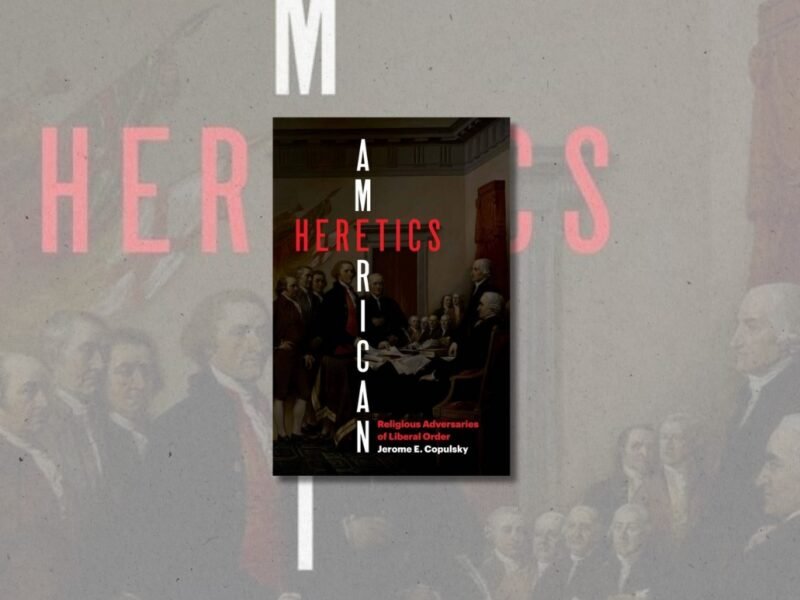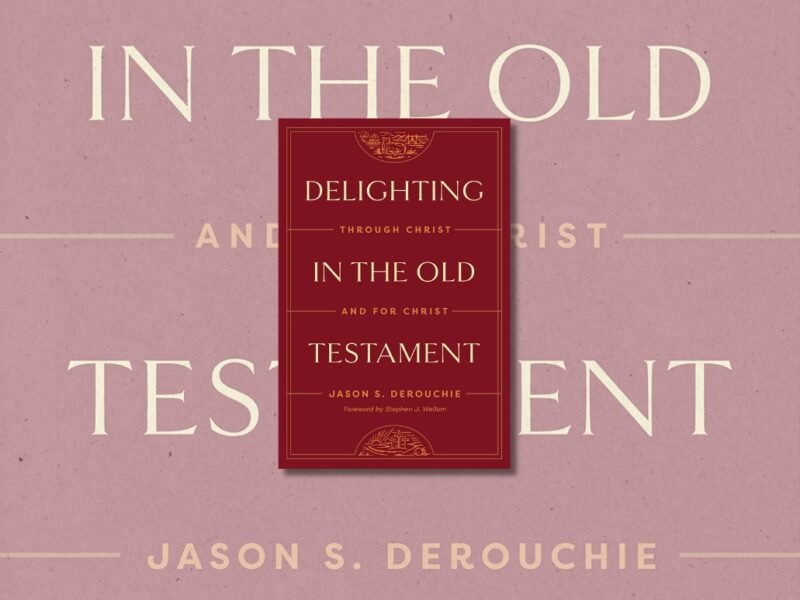Orthodox Anglican Identity: The Quest for Unity in a Diverse Religious Tradition. By Charles Erlandson. Eugene, OR: Pickwick Publications, 2020. 224 pp. $47.00 (cloth), $27.00 (paper).
This book is a useful exploration of ecclesial identity through the lens of the Anglican tradition. As the title makes clear, Erlandson explores both the diversity of Anglicanism and its identity markers. Anyone familiar with the Anglican world, both historical and contemporary, is aware of the tensions that have characterized Anglican identity and continue to do so. Erlandson shines a light on these tensions and the ever growing need to develop a common or shared identity that unifies Anglicans. In what follows, I will approach the review of the book in a somewhat different way from how I normally do reviews. In keeping with his somewhat academic and somewhat practical writing style, I, too, will consider the academic merits but also the practical merits of the work through the lens of my own personal experience of Anglicanism, a lens that I hope will invite others to more serious reflection about their own ecclesial identities. Before I do that, a summary of both Erlandson and the book are in order.
As a professor (with a doctorate from England) and an assisting priest, Erlandson is fit to write a work that is both historically rooted but also practically aimed. Further, Erlandson is a priest in the Reformed Episcopal Church, which is an orthodox or traditional Anglican group that is in close communion with the Anglican Church in North America (a group that formed after moving away from TEC upon the ordination of practicing homosexual clergy). Appropriately, then, his writing style is not representative of a doctoral dissertation, but there are plenty of references to chase up further discussions. It is also not a popular work on Anglicanism that simply lays out the general contours, common features, or the necessary conditions of being an Anglican—if this is even possible, something on which Erlandson spends not an inconsiderable amount of time. He writes in a way that bridges these worlds, almost in a story-like form, leaving it somewhere in the middle.
Erlandson approaches the topic not as a philosopher and not specifically as a systematic theologian, but as a historian. As a good historian, he is interested in developing the movements, trends, characters, and times that shape the trajectory of Anglicanism. His analysis is more of a social analysis of what we are as Anglicans rather than a precise philosophical articulation of Anglicanism. He begins his study where orthodox Anglicanism develops out of the identity crisis that has occurred in the wider western communion, along with its developing tendency away from what was once perceived to be normative Christian doctrine and practice. This is seen most acutely in The Episcopal Church—with its questionable revisions to the Prayer Book, ordination practices, and its general drift from traditional moorings—which emerged in what he calls the third stage in Anglican identity. In chapter 3, he surveys the varying approaches to this liberal trend and warns that the communion of orthodox Anglicans have re-ordered themselves. In chapter 4, he surveys norms that have bound traditional (i.e., now orthodox) Anglicans and ways that these reformed groups have maintained unity. In chapter 5, he gives further exposition to the challenges advanced to orthodox Anglican norms by considering four differing Anglican spiritualities (Anglo-Catholic, evangelical, charismatic, and Global Anglican). And finally, he offers some concluding thoughts.
The strength of Orthodox Anglican Identity is apparent. Erlandson presses the point home that orthodox Anglicans have come a long way in discerning their identity and where unity is found, but this identity re-formed in GAFCON, ACNA, and the G4 also has created significant challenges to further definition. Helpfully, he points out that this challenge is one that is common to most Christian groups. Anglicanism serves other groups as a kind of lens to the wider world of Global Christianity. To some extent, these challenges have always been present to historic Anglicanism, but our postmodern world, coupled with the desire to maintain a minimal confession, actually hinders the efforts of orthodox Anglicans.
From my own personal experience, I resonate with the highlights laid out by Erlandson. First, I have and do share the desire to maintain a great deal of diversity. Second, I share the same impulse reflected in the REC as well as other orthodox Anglicans to a more confessional Anglicanism that is in keeping with the moorings of traditional Anglicanism. Third, I share the concern that even within this global communion, of which the REC and the ACNA are parts, there is an emerging fracturing or fraying.
Having been raised in an evangelical and charismatic context, I was drawn to Anglicanism for a variety of reasons. I saw the beauty of traditional worship codified in ancient traditional liturgical practice. I also saw the sacramental unity that permeates historic Anglicanism in both its doctrine and practice (as reflected in the prayer books, the Book of Homilies, and the 39 Articles) as a strength that held together what one might argue is essentially the catholic nature of Christianity, represented in early Christianity and normative throughout Christian history as, well, basically Christian.
This practice was upheld and strengthened in commitment to a particular way of reading Scripture, as well as the visible unity found in the commitment to a three-fold clerical office (Deacon, Priest, and Bishop). Maintaining this, the diversity of doctrinal opinion on secondary matters seemed an important feature that is often missing in denominational contexts where confessionalism is at the center of spiritual practice. Ironically, the characteristic features of confessional unity often seen in Reformed circles, as well as in Roman Catholicism, appear to press the doctrinal (and, to some extent, liturgical) bounds too narrowly in a way that is hard to justify from Scripture as well as from tradition.
The temptation to draw the boundaries of Anglicanism more tightly in our modern or postmodern contexts is real. For as Erlandson shows, the trends in Anglo-Catholicism away from the prayer book seem like a departure from that which is a common unifying thread. The trend in evangelicalism toward a puritan ecclesiology that highlights a sola-exegetical method (using a term by Anglican evangelical Gerald Bray) and a congregational model of church, too, seems to depart from the rich sacramental and liturgical tapestry of traditional Anglicanism. The charismatic trajectory, in many ways in keeping with its evangelical heritage, adds to the list of departures. All of this is most acutely identified in the Global communion of Anglicans.
While Erlandson is reticent to identify these trends as departures, he concludes with little that is distinctively Anglican as a way of tying these strands together. No doubt, he is hopeful and his hope is motivated by the initiatives in GAFCON and the ACNA, but there is little by way of propositional unity or liturgical forms uniting these groups. There exists a mere Christian unity that appears to tie together all the traditions of Christianity (namely, Eastern Orthodoxy, Roman Catholicism and Protestantism), but maybe that is where the strength is found. If it is, then it is little more than that which ties all Christians together. This to me is not only the challenge of contemporary Anglicanism, but it is a weakness in Erlandson’s proposal.
Maybe there is one way forward that is tentative and underdeveloped. If confessional Anglicanism encourages too much doctrinal or liturgical precision, thereby causing exclusion, then drawing from what Kevin Vanhoozer has called “anchored sets” might help. Kevin Vanhoozer, in defining Reformed Christianity, has pressed that bounded sets, while present to some extent, fail to capture all that is present in Reformed Christianity. Centered sets seem to permit too much latitude that will, too, fail to capture Reformed Christianity. He suggests anchored sets—a notion that he describes not as a set of confessional or propositional litmus tests, but as a set of characteristics that commonly describe (without the ambitious task of setting out essential properties or necessary and sufficient conditions) the tradition or sub-tradition.
Anchored sets might help us give some description to what it means to be Anglican without demarcating so as to separate. Those common markers that describe Anglicanism, historically, would seem to include the Book of Homilies, the 39 Articles, and, to a greater extent, the traditional prayer book. These mark out and set Anglicanism apart from the varying sects within Protestantism without pressing the bounds too far in the direction of either Roman Catholicism or Eastern Orthodoxy.
Orthodox Anglican Identity helps set the parameters for further discussion. Erlandson blends the skills of a historical theologian and pastoral theologian. He provides a thoughtful historic and contemporary survey of issues surrounding Anglican unity in a way that one might think of as a kind of stage-setting, yet it is a stage-setting that grants footing to others who are seeking to find some clarity in their respective ecclesial situations. Given its specificity to Anglicanism and to social analysis, Orthodox Anglican Identity would be a useful text for advanced students of ecclesiology and historical theology.






'Book Review: “Orthodox Anglican Identity”' has no comments
Be the first to comment this post!